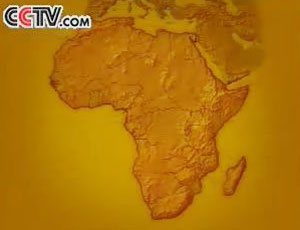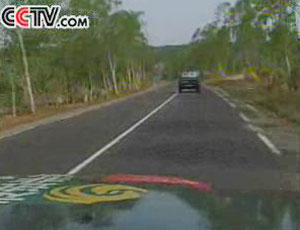Source: CCTV.com
10-24-2006 17:21
 |
In 2003, CCTV in association with Hong Kong’s Phoenix TV launched a full-length documentary series entitled “A Passage to Africa.” The 25-member production team started their journey from three directions on the African continent moving toward Mount Kilimanjaro, the tallest mountain on the equator.
This was the first general program made by Chinese TV reporters on the African continent. During their 100-day stay in Africa, they traveled 80,000 kilometers through 28 countries. Naturally, the strange social environments posed challenges for the making of the series.
In the year 682, an expeditionary force of the Arabian empire marched west to invade northern Africa until they reached the seashore west of Morocco. Looking into the roaring Atlantic Ocean, the Muslim general in charge of the expeditionary force blurted out “Maghreb” which means the westernmost land or where the sun sets in Arabic. The Arabs believed that they had reached the westernmost end of the earth, so they stopped their advance there. Morocco had been ruled by Berbers, Phoenicians, Romans, and Byzantines and now the Arabs were its rulers.
Over 1,300 years later, we are starting our trip through trip, which was known as “the remote West” to the Islamic world.
It can be said that Fes, a mountainous city in eastern Morocco, is the cradle of the country’s Islamic civilization.
In 786, an armed rebellion broke out in the Abbasside dynasty in Baghdad. Prince Moulay Idriss fled the rebellion and made his way to Mecca and, three years after that, traveled to Morocco. There founded the first Islamic dynasty and gave himself the title Idriss I and made Fes the capital of his country.
 |
This hillside castle is the highest building in the city of Fes.
It’s said that when the city was first established a groundbreaking ceremony was held and a gold ax was excavated. In Arabic, ax is pronounced as “fes,” and so the capital was given this name.
Idriss II, the successor of Idriss I, set his mind upon building a powerful European and African empire. To this end, he expanded the capital city of Fes and welcomed over 1,000 families from Andalusia in Spain.
In 825, 300 families of handicraftsmen, merchants and intellectuals migrated from Kairouan, Tunisia, to Fes. These Muslims from Andalusia brought with them the Arab art and culture that was at its zenith. The Qarrawiyyin Mosque is a masterpiece created by the immigrants from Kairouan. It is the oldest mosque in Morocco, and later it became the world’s first Islamic university.
The Qarrawiyyin Mosque is now a monument to and symbol of belief carved in stone.
Editor:Wang Ping
